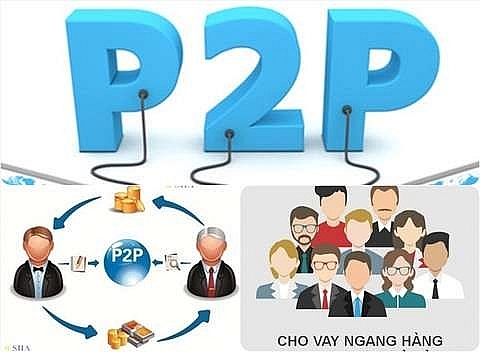Regulation needed for P2P loans
 |
| Peer-to-peer lending is becoming more common in Viet Nam. - Photo laodong.vn |
Since last year P2P lending, which involves lending to individuals and businesses by matching lenders and borrowers, is accelerating in Viet Nam with around 40 online lending companies springing up.
One of the most well-known is Tima Group Joint Stock Company, which was established in 2015.
Lenders and borrowers have to register on the Tima system and download an app to find a lender or borrower nearby to negotiate loan amount, interest rate and loan tenor.
Both parties have to pay the service provider a fee of VND15,000-25,000.
Tima’s recent customers are from all parts of the country.
The loan amounts run from VND3 million (US$130) to as much as VND90 million ($3,860).
The platform has around 4.8 million loan applicants, more than 3 million borrowers and 32,000 lenders, and total disbursement has been nearly VND61.8 trillion.
Lendbiz also uses this model but its borrowers are companies and household businesses.
To borrow money from Lendbiz, businesses have to be located in major cities and should have been around for at least one year and show positive growth.
Many P2P lending service providers announce interest rates of 1.2-1.5 per cent per month on their websites, equivalent to 18 per cent per year, but in fact the rates are much higher.
For instance, a borrower logging into Doctordong for a loan of VND10 million ends up paying back VND13.91 million after 30 days (equivalent to an interest rate of 39.1 per cent a month). The website now has nearly 6.8 million registered customers.
According to the Bank for Investment and Development of Viet Nam Research Center, the global P2P lending market was worth $1.2 billion in 2012. The figure went up to $64 billion three years later and is forecast to reach $1 trillion by 2025.
Peer lending in Viet Nam has developed rapidly due to the lack of easy access to financial services. According to the World Bank, only 40 per cent of Vietnamese adults have a bank account.
But experts warn this rapid increase in P2P lending might lead to the rise of loan-sharking.
According to Can Van Luc, chief economist of BIDV and director of the BIDV Training School, like many other developing countries, Viet Nam does not have a legal framework for peer lending yet.
Companies operating in this field often register as an investment consulting firm and lending is still unregulated, he said.
Therefore, this activity has many potential economic and social risks, he added.
Concerns have been sparked by what has been happening in China, where P2P lending has been growing rapidly.
Since the beginning of 2011 the service there has attracted around 50 million people and interest rates are 10 per cent a year or more (double the bank lending rates), and transactions were worth nearly $218 billion as of the middle of last year.
However, due to the lack of regulations, in mid-2018 many companies resorted to illegal activities.
It resulted in 400 companies going bankrupt. Some company owners fled with investors’ money. After that China took a number of measures to regulate P2P lending.
In Viet Nam, the Government has instructed the Ministry of Planning and Investment to draft a plan for the sharing economy model.
Three sharing economy models have seen strong growth in the country, including car-hailing, room sharing and peer-to-peer lending.
What the stars mean:
★ Poor ★ ★ Promising ★★★ Good ★★★★ Very good ★★★★★ Exceptional
Related Contents
Latest News
More News
- Tax sector wraps up 2025 and sets priorities for next year (December 25, 2025 | 14:00)
- A tipping point for digital and hybrid wealth management in Vietnam (December 23, 2025 | 13:33)
- $250 million deal targets women-owned SMEs, sustainable agriculture (December 22, 2025 | 17:40)
- Stock market posts resilient 2025 performance (December 19, 2025 | 18:17)
- Citi Vietnam receives 2025 AmCham CSR recognition (December 19, 2025 | 16:35)
- As global green supply chain reshapes, will Vietnam be left behind? (December 19, 2025 | 08:00)
- Banks gear up for massive capital increases (December 18, 2025 | 17:04)
- Securing capital and efficiency for Vietnam’s 2026-2030 growth ambitions (December 17, 2025 | 10:00)
- Energy sector in need of blended finance mechanisms (December 17, 2025 | 09:00)
- Vietnam still has room to mobilise capital for sustainable growth (December 17, 2025 | 08:57)

 Tag:
Tag:


















 Mobile Version
Mobile Version